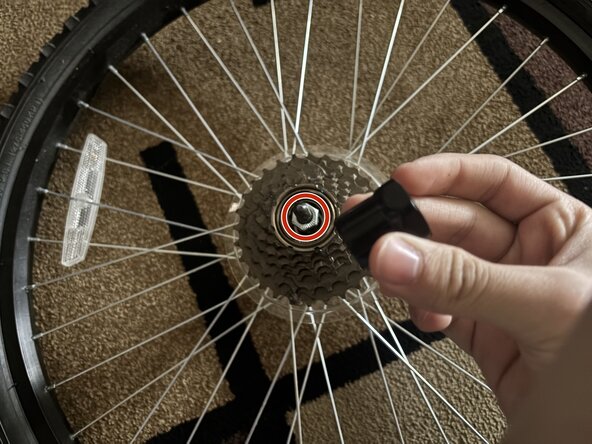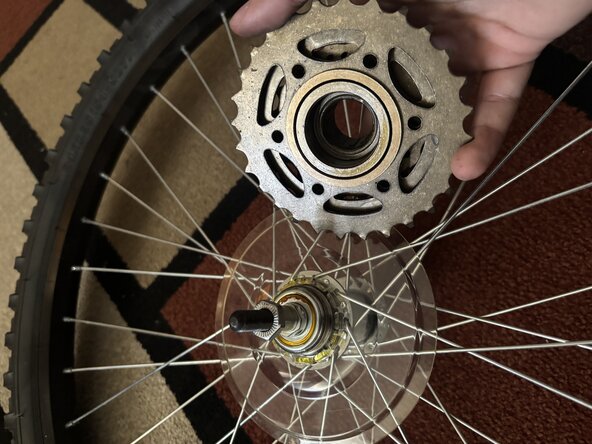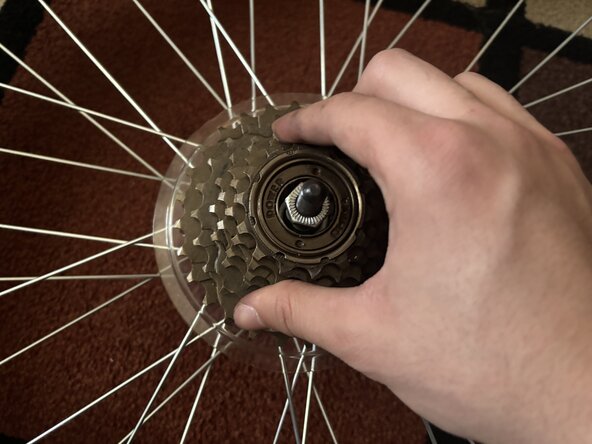crwdns2915892:0crwdne2915892:0
Replacing a freewheel is an important maintenance task that can restore smooth pedaling and enhance overall bike performance.
The freewheel is a clutch mechanism attached to the rear hub that allows the bike to coast—letting the wheel spin freely even when you're not pedaling.
Over time, freewheels can wear out, leading to skipping, poor engagement, or difficulty shifting. Whether you're replacing a worn-out freewheel or performing routine maintenance, following the correct steps will ensure a secure and reliable installation.
This guide will walk you through the process of replacing a freewheel, beginning after the rear wheel has been removed from the bike. Along the way, you’ll pick up helpful maintenance tips to keep your drivetrain in excellent condition. With the right tools and a bit of care, you’ll have your bike ready to ride in no time!
crwdns2942213:0crwdne2942213:0
-
-
Place the freewheel removal tool onto the notches of the freewheel.
-
-
-
Use an adjustable wrench to turn the freewheel removal tool counter-clockwise to loosen the freewheel.
-
-
-
-
When it's loose, remove the freewheel by hand.
-
-
-
Carefully examine the hub threads for any signs of damage or wear, such as cross-threading or debris.
-
-
-
Install the new freewheel by spinning it with your hand clockwise until it is snug.
-
After following this guide your new freewheel should be installed.
After following this guide your new freewheel should be installed.


















